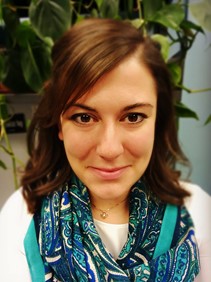Speakers
Grace Wilkinson

Assistant Professor, University of Wisconsin –Madison Department of Integrative Biology
ARE ALGAL BLOOMS GETTING WORSE?
Severe algal blooms threaten ecosystem and human health, resulting in billions of dollars in economic loss. The interaction between eutrophication and climate change is hypothesized to be driving widespread intensification of blooms in inland waters, although little work has been done to evaluate this hypothesis. In this talk, I will present recent research exploring trends in algal bloom magnitude and severity from hundreds of lakes across the United States and the conditions that are driving these trends. We found that bloom intensification in inland waterbodies, defined as increasing trends in chlorophyll-a of increasing bloom magnitude, severity, or duration, has not been widespread for hundreds of lakes in the United States. Only 10.8% of the 323 waterbodies analyzed had significant bloom intensification. Conversely, 16.4% of the waterbodies had significant decreasing trends during the same period. Interestingly, the interaction of between severe precipitation and trophic state of a lake was indicative of a waterbody’s bloom trajectory. While it is encouraging that bloom intensification isn’t currently widespread, continued efforts towards aquatic ecosystem protection and restoration are imperative for maintaining ecosystem services into the future.
Bio: Dr. Grace Wilkinson is a limnologist and ecosystem ecologist with a research focus on aquatic-terrestrial linkages. Her research interests are at the intersection of nutrient cycling, water quality, and ecosystem resilience. In 2021, she started as an assistant professor in the Center for Limnology at the University of Wisconsin – Madison. Prior to that time, she was an assistant professor at Iowa State University.
Kate Hubbard

Florida Fish and Wildlife Conservation Commission-Fish and Wildlife Research Institute
ADVANCING OBSERVATION NETWORKS IN SUPPORT OF HARMFUL ALGAL BLOOM (HAB) FORECASTING FROM POLAR TO SUB-TROPICAL SYSTEMS
Persistent and recurring harmful algal blooms (HABs) negatively impact human, ecosystem, and economic health. Accurate bloom tracking and forecasting can provide resource managers, health departments, and the public with timely information to inform decision-making. This requires several key components: 1) a sustainable, multiparameter, regional HAB observation network that is highly leveraged, 2) geographically and temporally rich historical observations; 3) integration of new observing datastreams; and 4) development and advancement of targeted forecasting capabilities. State-of-the-art observing technology has proven to be critical in timely data collection during bloom events and, moreover, for revealing phenomena that might otherwise be overlooked, such as the importance of diel changes in Karenia brevis and Pseudo-nitzschia species transitions across environmental gradients. At the same time, repeated and sustained sampling is critical for building time series that can be used to inform and validate predictive models. Implementing a multi-partner (and thus highly leveraged) and innovative network helps ensure that in situ observations of cells and toxins occur routinely throughout the year – capturing key bloom stages and shifts in the physical and chemical environment. This would advance bloom forecasting, recognizing that abiotic and biotic factors such as nutrients, trace metals, and cell physiology are important parameters to include. Recognizing the ecological flexibility displayed by many HABsin lab and field studies, examples will be provided that demonstrate how expanding observational and modeling infrastructure is essential for forecasting and hindcasting the response of HABs to environmental changes occurring across event to multi-decadal time scales, with a focus on polar, temperate, and sub-tropical systems. Also critical to our success in building these comprehensive networks is the ability to communicate scientific results to broad audiences and to creatively span gaps among research, monitoring, and management communities.
Bio: Dr. Kate Hubbard leads the HAB monitoring and research program for the FWC-FWRI. As a research scientist, she works closely with a broad network of partners to sustain and advance comprehensive HAB monitoring. Her expertise in genomics and ecology has also helped evaluate drivers of HABs and other species. Recent enhancements to Florida’s HAB monitoring network under her direction have focused on new, enhanced, and/or sustained biological, chemical, and physical observation capabilities. As a Co-Investigator of the NSF/NIEHS-funded Woods Hole Center for Oceans and Human Health at the Woods Hole Oceanographic Institution, Hubbard is involved in HAB detection and forecasting projects across the US to better understand and predict blooms and their impacts and is committed to working at the interface of HAB research and management. She also prioritizes engaging junior scientists in research and communication. She received her B.A. in Biology from New College of Florida and M.S. and Ph.D. degrees in Biological Oceanography from the University of Washington. She has served on the National HAB Committee since 2017.
Halle Berger

Department of Marine Sciences, University of Connecticut
National Oceanic and Atmospheric Administration
HARMFUL ALGAL BLOOMS AND OCEAN ACIDIFICATION: DEFINING A RESEARCH AGENDA
Harmful algal blooms (HABs) and ocean acidification (OA) are threats to marine ecosystems and human communities. HABs and OA have common drivers in coastal areas and often co-occur in space and time. Although many studies have provided insight into HAB dynamics, only a few of these have included OA. Similarly, OA studies have examined biogeochemistry and impacts to marine resources and have started to expand into multi-stressor studies, but less is known about the influences of HAB-OA interactions and cascading impacts to coastal ecosystems and economies. The NOAA Ocean Acidification Program (OAP) and National Centers for Coastal Ocean Science (NCCOS) Competitive Research Program (CRP) held a virtual workshop to identify research needs at the intersection of HABs and OA. This presentation will focus on the regional and national grand challenges, research priorities, and research products highlighted at the workshop. Research areas of high priority at the national level include modeling for prediction, attribution, and sensitivity testing; leveraging monitoring assets to measure HAB and OA parameters simultaneously; data management to foster integration; data product development; and enhanced communication and outreach efforts. Importantly, the workshop identified a need for increased collaboration between HAB and OA scientists. Interdisciplinary approaches will be required to disentangle the complexities of HAB-OA interactions and address stakeholder needs. This effort will be facilitated by the NOAA OAP and NCCOS CRP through the development of a community of practice and a federal funding opportunity.
Bio: Halle Berger is a 2021 Sea Grant Knauss Marine Policy Fellow serving as a Coastal Stressors Program Coordinator with the NOAA Ocean Acidification Program and National Centers for Coastal Ocean Science Competitive Research Program. She is working on building a research community to address the overlapping challenges between harmful algal blooms and ocean acidification. Halle is also currently a PhD Student at the University of Connecticut. Her research assesses the vulnerability of important shellfisheries to changing ocean conditions.
Plenary Session will be followed by a Q&A panel with Halle and NOAA Program Managers Quay Dortch, Maggie Broadwater and Erica Ombres.

